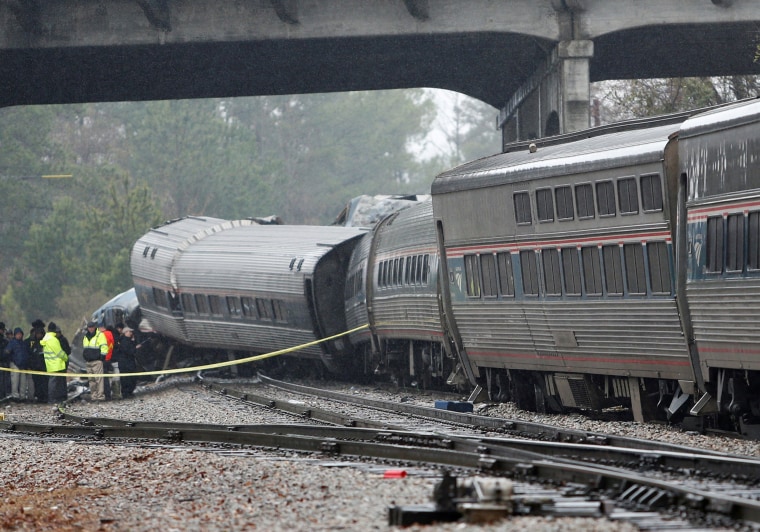Several recent railway accidents may have struck fear into the hearts of passengers — but the next one could cripple our economy as well. And the deteriorating and outdated infrastructure along the Northeast Corridor rail system means that, sadly, that next disaster is just around the corner.
The Northeast Corridor’s 457 miles of railway — connecting major cities from Boston to Washington, D.C. — is the nation’s most economically critical stretch of infrastructure. These railways enable hundreds of thousands of workers to get to work each day, as one-third of all jobs in the region (that's 7 million jobs, all told) are located within five miles of a rail station. Those workers alone contribute over $50 billion annually to the American economy;altogether, the region would be the fifth-largest economy in the world.
But most the infrastructure system empowering this economy was built in the era between the Civil War and the New Deal, and its time-ravaged condition repeatedly results in repeated track, tunnel and bridge issues that cause constant headaches for commuters, a loss of economic productivity and sometimes worse.
President Trump and Congress must start fixing this now, with long overdue investments that would finally bring our railway system into the 21st century.
It is crucial to recognize that safety concerns and economic considerations are not two separate policy conversations: Both issues must be addressed together through new federal investment. President Trump needs to take the lead on this front, not cede it to state agencies and as yet-unnamed private investors, by prioritizing funding for the system as part of his infrastructure proposal today.
Additionally, new investment must be accompanied by greater coordination between the federal government and local officials who best understand the specific problems facing rail infrastructure in their states. Through that combination of increased funding and communication, we can proactively solve the problems facing our railways — and build much-needed new projects — instead of simply reacting to incidents (or tragedies) as they arise.
And while numerous major projects have been proposed throughout the Northeast Corridor to solve some of the system’s most urgent infrastructure challenges, these initiatives will remain grounded unless Congress and the Trump administration devote resources to them.
The most significant of these stalled proposals is the Gateway Project, a major overhaul of the system that would create a new train tunnel for commuter and passenger trains to enter New York City from New Jersey.
The Trump Administration, as part of its new infrastructure bill released today, has committed to taking a different approach than that of past administrations with regard to funding mechanisms for projects of regional or national importance, including the Gateway Project. Under the Obama Administration there had been talks of a 50 percent contribution by the federal government; the new legislation would cap federal contributions at 20 percent but could open the door to reaching a funding agreement in the months to come.
The project is of some immediate urgency: Amtrak has already warned that it will be forced to close part of the existing tunnel without immediate action because of lingering damage from Superstorm Sandy.
Such a closure would have devastating consequences for commuters throughout the Corridor and send shockwaves throughout the national economy. The impact of even a partial tunnel shutdown would be felt all the way to D.C., as delays would back up the entire line from Washington to Boston. Such back-ups would have major economic implications; already, service disruptions cost the economy $500 million per year in lost productivity.
The effects of Amtrak disruptions would be compounded by making transit into and through New York City even more difficult. In 2016, America’s largest city generated nine percent of the country’s gross domestic product. It would be a mistake to take that growth for granted: a survey of 50 international CEOs conducted by the Partnership for New York City found that all 50 identified the reliability of regional transportation as their number one concern about expansion in the New York metro area.
Safe and efficient rail service is more critical than ever, both for New York City’s economy, but for the entire nation.
The problem with practically ancient rail infrastructure is not limited to New York City: In Baltimore, for example, officials are struggling to identify how to pay for a complete replacement of the Baltimore and Potomac Tunnel, which was built in 1873. In Connecticut, the condition of the Connecticut River Bridge — which was built in 1907 and links New Haven and Boston — limits train speed to 45 miles-per-hour and slows down service across the region.
Without significant federal support, these badly needed projects along the nation’s most important transportation corridor will continue to be stuck in the planning stages and die on the vine.
With the state of the nation’s most important infrastructure system crumbling, delays threaten the economic future of the region and put passenger safety at risk. It is time for President Trump and Congress to partner with local governments and commit the resources necessary to make our transportation infrastructure safer and stronger than ever.
Michael Friedberg is executive director of the Coalition for the Northeast Corridor (CNEC). He most recently served as staff director of the Subcommittee on Railroads, Pipelines and Hazardous Materials of the U.S. House Committee on Transportation and Infrastructure, and previously served on the professional staff of the House Committee on Appropriations.

